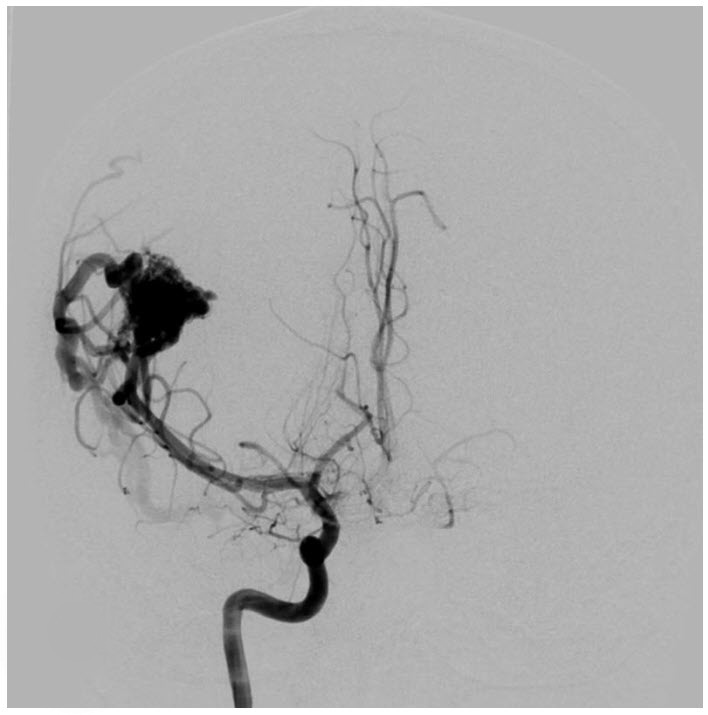Question 9#
A 54-year-old man with no past medical history was brought into the emergency department by his wife for altered mental status. On arrival to the emergency department, the only pertinent history and findings were an ongoing holocephalic headache and some confusion. A noncontrast head CT demonstrated a right frontoparietal intraparenchymal hemorrhage. The patient was stabilized and taken for a diagnostic angiogram, which is shown in the figure below. The figure is a right internal carotid injection projected as an anterior-posterior view. He was diagnosed with an arteriovenous malformation (AVM).

Which of the following statements is true regarding this patient and his AVM?
A. This AVM is not concerning, given that it does not arise directly from the internal carotid arteryB. Because the AMV has already bled, there is a lower risk of rehemorrhage in the future
C. AVMs are typically congenital and increase the lifetime risk of seizure and intracerebral hemorrhage
D. An AVM is a direct connection between arteries and veins with normal brain tissue surrounding the abnormal vessels
Correct Answer is C
Comment:
Correct Answer: C
AVMs are abnormal, direct connections between arteries and veins without intervening capillary beds and no normal brain tissue among the blood vessels. AVMs are typically congenital but can grow with time. Typical presenting symptoms of AVMs are seizures and intraparenchymal hemorrhage as these may not be isolated to the brain. The risks of AVM surgical mortality and morbidity are characterized based on the AVM size, location, and type of venous drainage. With increased use of intracranial imaging, asymptomatic AVMs are increasingly documented, which should be closely followed.
References:
- Kucharaczyk W, Lemme-Pleghos L, Usake A, et al. Intracranial vascular malformations: MR and CT imaging. Radiology. 1985;56:383-389.
- da Costa L, Wallace C, tre Brugge KG, et al. The natural history and predictive features of hemorrhage from brain arteriovenous malformations. Stroke. 2009;40:100-105.